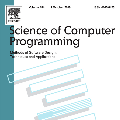This paper investigates the collaboration of multiple connected and automated vehicles (CAVs) in different scenarios. In general, the collaboration of CAVs can be formulated as a nonlinear and nonconvex model predictive control (MPC) problem. Most of the existing approaches available for utilization to solve such an optimization problem suffer from the drawback of considerable computational burden, which hinders the practical implementation in real time. This paper proposes the use of sequential convex programming (SCP), which is a powerful approach to solving the nonlinear and nonconvex MPC problem in real time. To appropriately deploy the methodology, as a first stage, SCP requires linearization and discretization when addressing the nonlinear dynamics of the system model adequately. Based on the linearization and discretization, the original MPC problem can be transformed into a quadratically constrained quadratic programming (QCQP) problem. Besides, SCP also involves convexification to handle the associated nonconvex constraints. Thus, the nonconvex QCQP can be reduced to a quadratic programming (QP) problem that can be solved rather quickly. Therefore, the computational efficiency is suitably improved despite the existence of nonlinear and nonconvex characteristics, whereby the implementation is realized in real time. Furthermore, simulation results in three different scenarios of autonomous driving are presented to validate the effectiveness and efficiency of our proposed approach.
翻译:本文调查了不同情景下多个连接和自动化车辆(CAVs)的合作情况。一般而言,CAVs的合作可以作为一种非线性和非节化模型预测控制(MPC)问题来进行。大多数可用于解决这种优化问题的现有方法都因相当大的计算负担的退步而受到影响,这妨碍了实时实际执行。本文提议使用顺序连接编程(SCP),这是实时解决非线性和非convex MPC问题的一个有力办法。为了适当采用这种方法,在第一阶段,SCP要求在充分处理系统模型的非线性动态时,需要线性化和离散化。基于线性化和离散化,最初的MPC问题可以转化为一个四进制制约的四进制四进制编程(QQP)问题。此外,SCP还涉及对处理相关的非线性和非convex MPCP 问题的一种交替化方法。因此,非convex QQP可以降低为四进制式编程(QP),而不能在现实化的演算结果中迅速解决。



